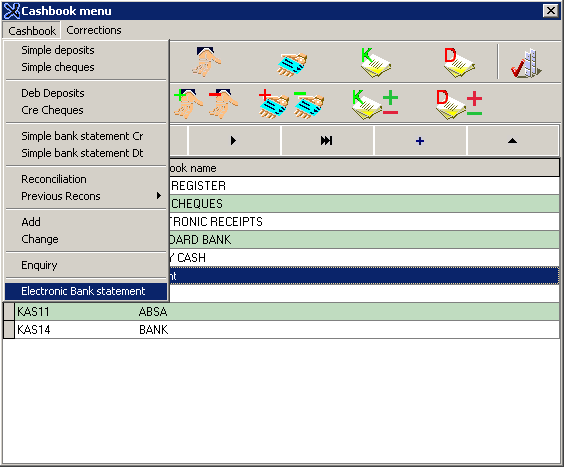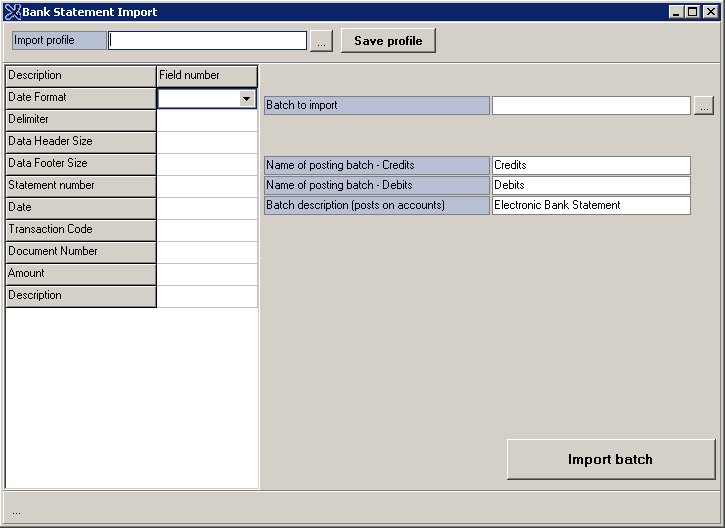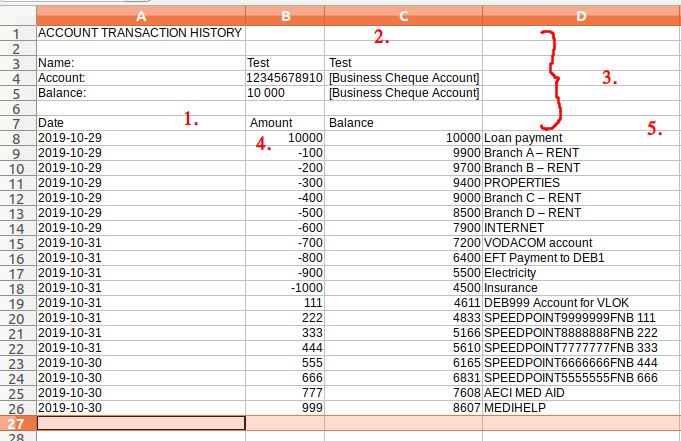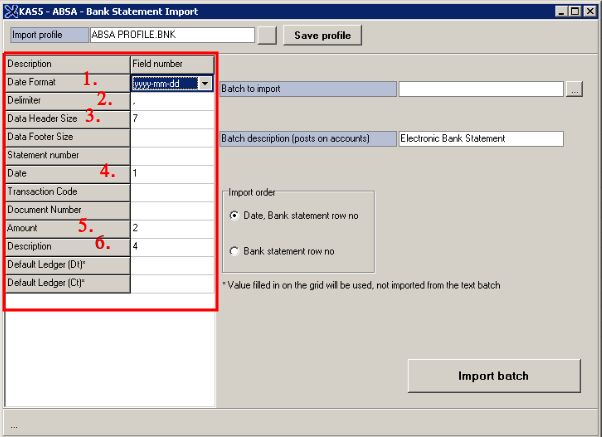Creating an Electronic Bank Statement Profile
Purpose:
The main Bank Cashbook is used for the reporting of all transactions that go through on a bank account. Because this Cashbook should be an exact duplicate of the applicable bank account, the best way to get these transactions into the GoodX system is to do an Electronic import.
The reconciliation of the Bank Cashbook is a control method to confirm that all the imported transactions reconcile with the opening balance and the closing balance of the particular period.
The format of the Electronic bank statementsof all the different Banking institutes, is not exactly the same. Therefore the first step is to create a Bank Profile for the particular banking institution the practice is using.(We are using an ABSA profile as an example)
Roadmap: Financial >> Cashbooks >> Select applicable Bank Cashbook >> Cashbook >> Electronic Bank Statement

- The following Bank Statement Import screen will appear

- Click on the ellipsis button in order to select the applicable profile, or to create a profile.

- Select the KasProfile folder
- Allocate a Filename if this is a new profile
- If there is an existing profile, select.
- Click on OK

- For a New Profile, create the profile according to the format of the specific Bank CSV file.

- Complete the screen below as per the explanation above.
1. Date Format: Click on the dropdown box and select the Date Format as it appears on the Bank Statement E.g.: 2013-04-03 (yyyy-mm-dd)

2. Delimiter: Always use a comma (,) as it is a CSV file (Comma Separated Variable)
3. Data Header Size: The number of Header lines in the CSV file is 7.
4. Date column: The column where the Date reflects - Column 1
5. Amount column: The column where the Amount reflects - Column 2
6. Description: The column where the Description reflects - Column 4

- When completed, click on Save Profile
